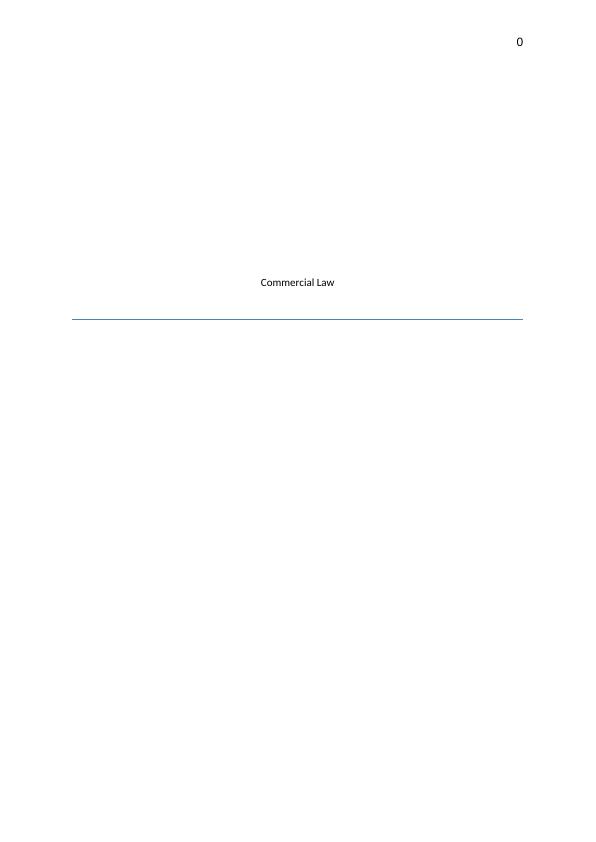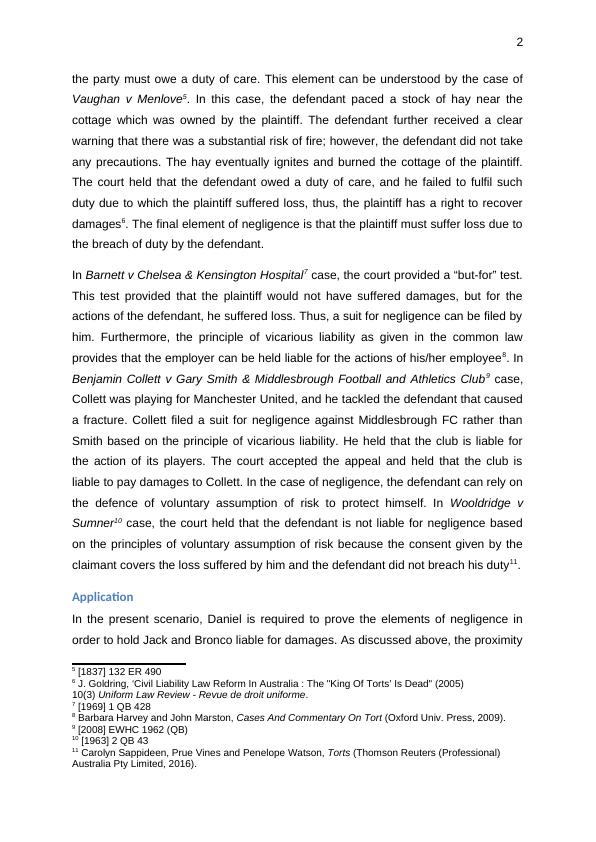Negligence and Negligent Misrepresentation in Commercial Law
Write an individual essay answering two problem questions in the field of Commercial Law, with a maximum of 1500 words. The essay is due on Friday, 10 August before 11.00 pm and must be submitted through Turnitin.
8 Pages2104 Words456 Views
Added on 2023-06-08
About This Document
This article discusses the principles of negligence and negligent misrepresentation in commercial law with the help of case studies and examples. It explains the legal remedies available to parties in case of economic loss and personal injury. The article also covers the elements of negligence, duty of care, and the defence of voluntary assumption of risk. The case studies discussed in the article include Condon v Basi, Vaughan v Menlove, Barnett v Chelsea & Kensington Hospital, Benjamin Collett v Gary Smith & Middlesbrough Football and Athletics Club, Hedley Byrne & Co Ltd v Heller & Partners Ltd, and Spartan Steel & Alloys Ltd v Martin.
Negligence and Negligent Misrepresentation in Commercial Law
Write an individual essay answering two problem questions in the field of Commercial Law, with a maximum of 1500 words. The essay is due on Friday, 10 August before 11.00 pm and must be submitted through Turnitin.
Added on 2023-06-08
ShareRelated Documents
End of preview
Want to access all the pages? Upload your documents or become a member.
Case on Claim of Negligence
|11
|2433
|55
Torts of Negligence Case Study
|7
|1435
|251
Negligence and Liability: A Case Study of RSL Club and Railway Station
|5
|1606
|428
Assignment on Law Negligence
|13
|3690
|372
Business Law Assignment 2018: Potential Plaintiffs in Case of Negligence
|5
|1227
|254
Liability for Negligence and Occupiers' Liability
|5
|1402
|345



